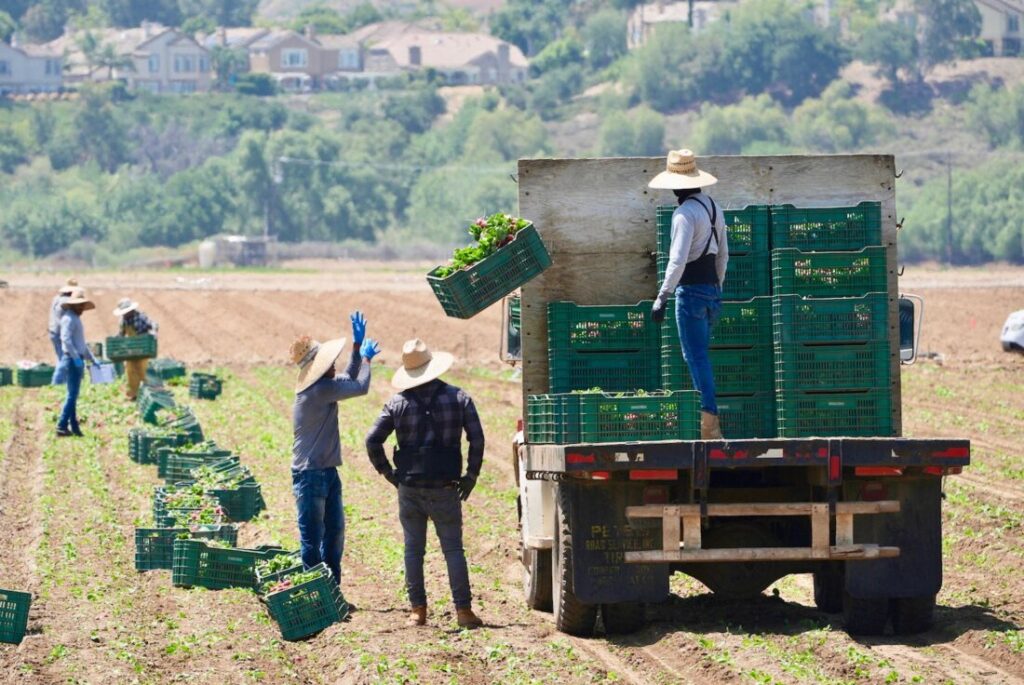Fear and Uncertainty Among Farm Workers in California
In the fields of Oxnard, California, a group of women crouch silently between rows of berry bushes, their presence almost concealed from view. One of them, donning a hat and purple bandana, braces herself with fear as she asks, “Are you from ICE?” After confirming we are not with the U.S. Immigration and Customs Enforcement, she hesitantly rises, filled with trepidation.
The woman is an undocumented migrant, who has been harvesting berries in this city, known as the “strawberry capital of the world,” since she moved from Mexico two years ago. With her work shift ending just the day prior, she, alongside her colleagues, remained hidden, anxious about the escalating situation surrounding immigration raids in the area.
The Impact of Recent Immigration Raids
Local activists have reported that on a previous day, ICE agents approached nine nearby farms, but were denied entry due to lack of search warrants. Consequently, they resorted to arresting individuals on the nearby streets, resulting in at least 35 detentions.
President Donald Trump’s administration has made it a goal to detain substantial numbers of undocumented immigrants, amid a backdrop of significant political tension and public protests in major cities like Los Angeles. This aggressive policy has incited fear among communities and stirred up street demonstrations, leading to military involvement to manage protests.
“They treat us like criminals, but we only came here to work and have a better life,” shares the woman, who left her children behind in Mexico. The uncertainty has forced her and many others to remain indoors, forgoing routine activities such as shopping due to persistent fear of arrest.
Shift in Immigrant Dynamics
According to community organizer Lucas Zucker, rigorous immigration enforcement tactics reminiscent of those not seen in 15 years have returned. “They are sweeping through immigrant communities like Oxnard indiscriminately,” he explains, highlighting the discrimination faced by undocumented workers.
| Statistic | Percentage |
|---|---|
| Undocumented farmworkers in the U.S. | >40% |
| Undocumented farmworkers in California | >75% |
The effects of these raids are being felt beyond the fields. Many local businesses, like Casa Grande Cafe, have reported declining customers. The proprietors are anxious for the future, fearing the impact of these crackdowns on local economies. “Nobody came in today,” laments Paula Pérez, as her daughter Raquel observes the hollowed lunch hour.
Óscar, a vendor selling strawberries from his truck, explains that fewer customers are venturing out, significantly reducing his sales. “I’m scared, but I have to work to provide for my family,” he insists, revealing the precariousness of his situation as he navigates an uncertain future for his family.
In a chilling reminder, many workers now avoid places like courthouses where ICE is known to operate, complicating their efforts to legalize their status. As these raids persist, the ripple effects threaten not only the livelihoods of the workers but also the very fabric of the agricultural industry in America.

